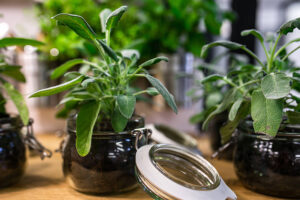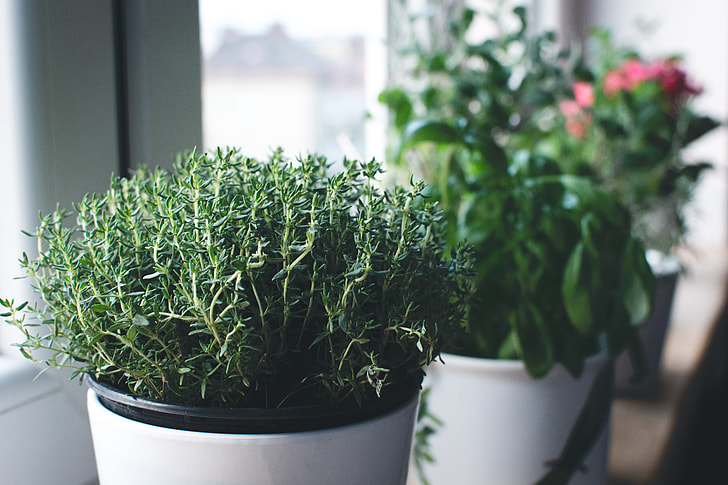Most herbal plants can be grown indoors, Among thousands of herbs, there are popular Indoor herbs like basil, chives, mint, oregano, parsley, rosemary, and thyme. Beginners can start indoor herbs from seed or cuttings, which is a branch of an existing plant cut at the node and soaked in water until new roots sprout. The most recommended indoor herbs are Basil and Oregano which is a popular Italian, Mexican, Central American, and Middle Eastern cuisine, and also oregano is a member of the mint family. Many indoor herbs show the best growing result during the winter. When it’s too cold or too wet outside, it is difficult to grow herbs, But indoor herbs can be grown any time of year. Indoor herbs prefer the same temperatures that most people prefer (65 to 70 degrees F) Then it will be comfortable for the owners.

The main point is Indoor herbs need to be watered regularly as they should never be allowed to dry out for a considerable time. But it also can be managed in several ways. As an example, there is no need to water Indoor herbs daily. Water it only when the top of the soil just starts to feel dry.
It is recommended to use a peat-based soilless seed-starting mix in a 3- to a 4-inch-deep container or seed-starting flat with drainage holes to start indoor herbs seed. To provide pre-moisten, mix with water until it feels like a wrung-out sponge.
Most Indoor herbs plants prefer a lot of sunlight as well as the other plants. Therefore it’s better to provide at least six hours of sunlight per day to indoor herbs. To maximize indoor herbs exposure, place plants as close as possible to the brightest window or place indoor herbs in a sunny spot near a window that faces south and receives at least 6 hours of sunlight daily. By the way, some herbs are not demanding sunlight and grow well in slightly shadier places. Mainly the Soft leafy indoor herbs such as chives, parsley, mint, cilantro, tarragon, oregano, and lemon balm can do quite well in slightly shadier spots. But soft-leaved indoor herbs like basil and dill require full sun.
Indoor herbs locating ideas
Usually, herbal plants as well as the Indoor herbs need good all-natural organic fertilizer which can be mixed in with the potting mix prior to planting. Apply a good liquid fish and kelp fertilizer at half the recommended strength every few weeks. This is necessary If your plants lose their color or look a little peaked during the growing period.
Success Tips for Indoor herbs
1. Provide Strong SunLight for Indoor herbs or Garden.
2. Need to maintain the temperature between 60-70 degrees.
3. An Infrequent, slow thorough watering is recommended.
4. Consider enough space when selecting Pots for Indoor Herbs.
5. Grow each plant of indoor herbs in a separate Pot.
6. Flush Indoor herb pots regularly with water to remove fertilizer salt buildup.

